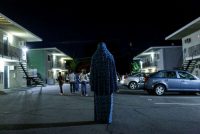
The Reichstag Warning
On February 27, 1933 the German Parliament building burned, Adolf Hitler rejoiced, and the Nazi era began. Hitler, who had just been named head of a government that was legally formed after the democratic elections of the previous November, seized the opportunity to change the system. “There will be no mercy now,” he exulted. “Anyone standing in our way will be cut down.”
The next day, at Hitler’s advice and urging, the German president issued a decree “for the protection of the people and the state.” It deprived all German citizens of basic rights such as freedom of expression and assembly and made them subject to “preventative detention” by the police.… Seguir leyendo »

















